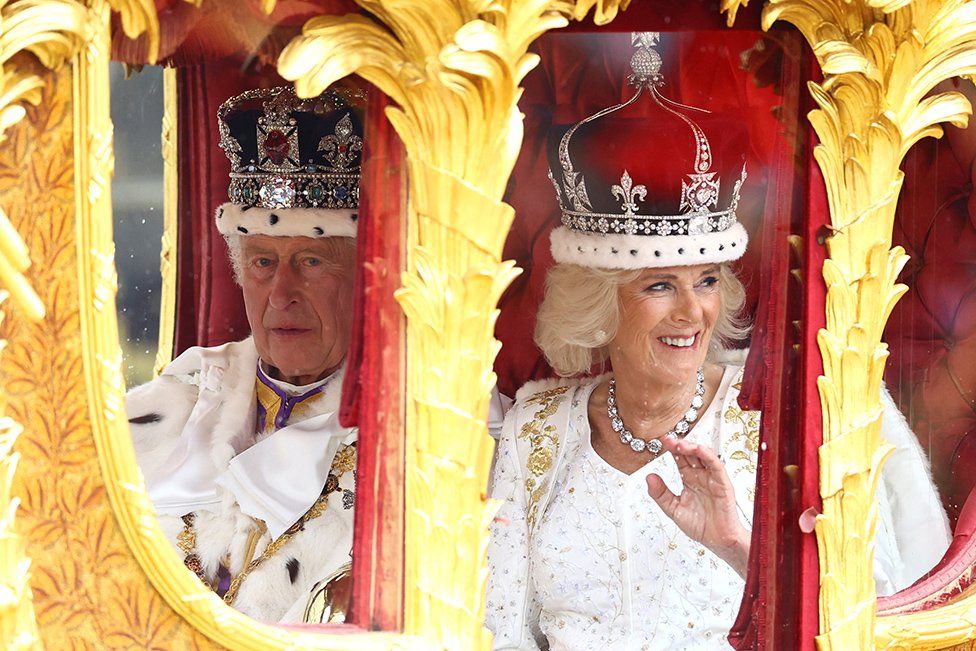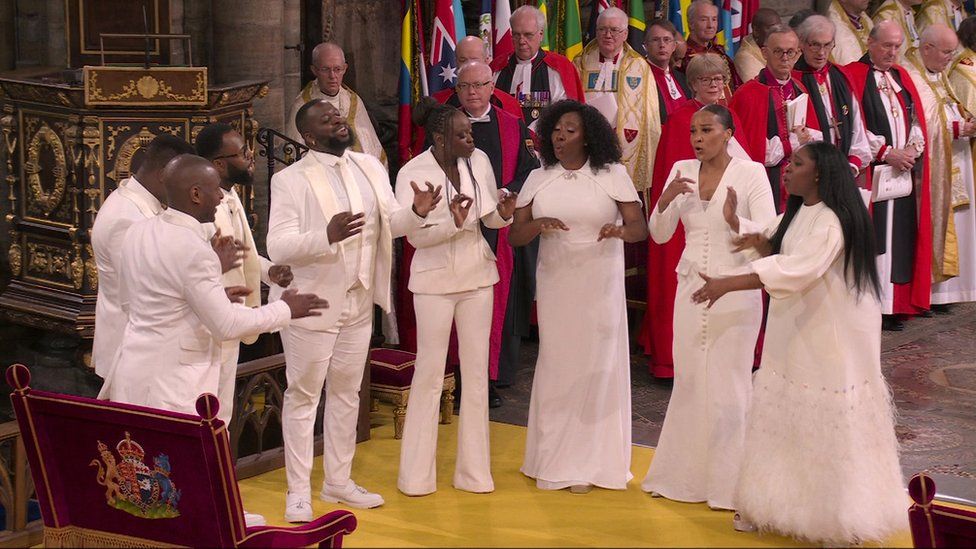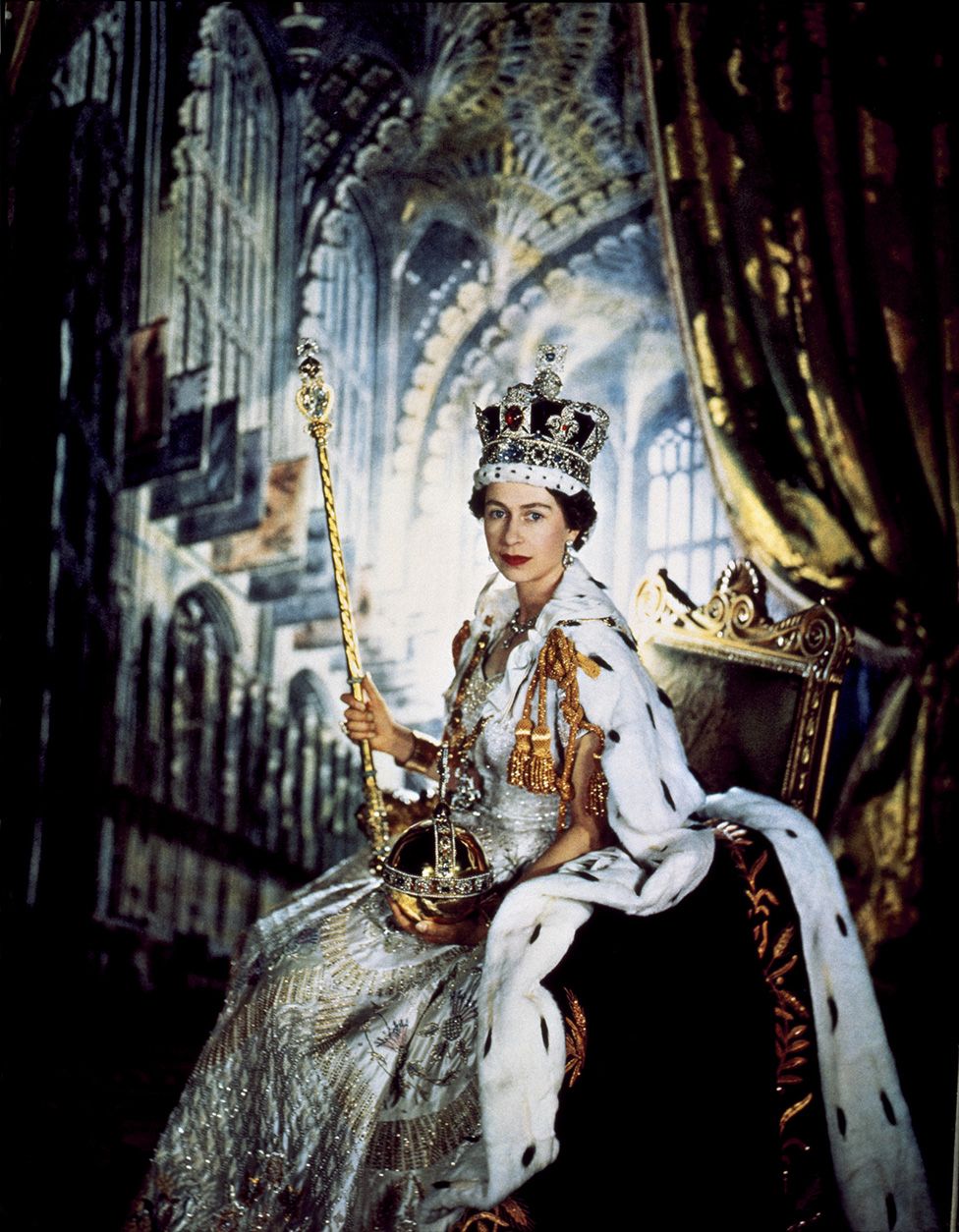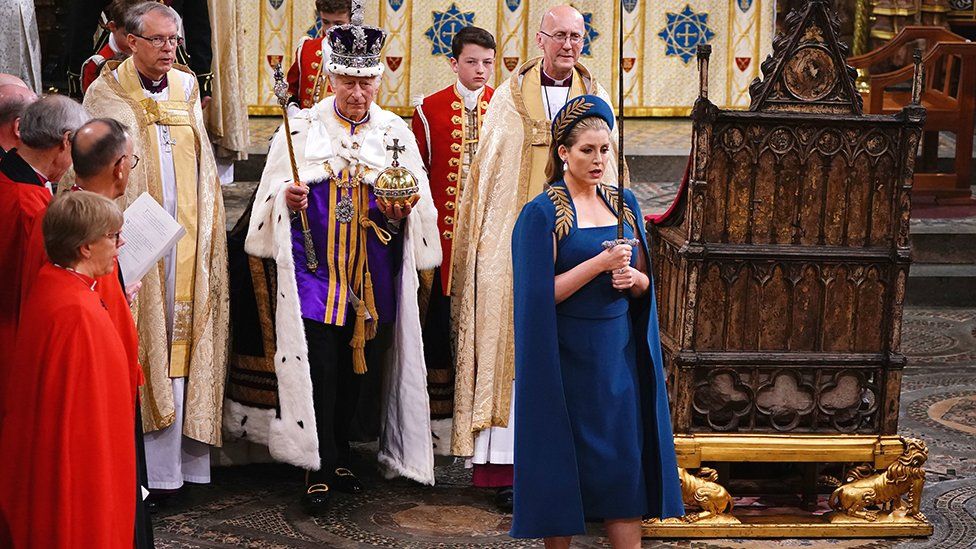The Coronation: Six takeaways from a historic day

A visual spectacle of arcane traditions
We knew this would be a real spectacle, but from my front row seat (in my sitting room) much of it still felt from a bygone era. This was Britain with all its pomp on show. Golden carriages, weighty robes of state and jewel-encrusted crowns.
It’s hardly surprising there were so many arcane traditions, in a ceremony that dates back 1,000 years at Westminster Abbey. But who knew, until Coronation day, that swords have names?
The Sword of State and the Sword of Offering – more about them later – the Sword of Temporal Justice, the Sword of Spiritual Justice, the Sword of Mercy.
Or that Princess Anne would be known as the Gold-Stick-in-Waiting.
Or that there are bracelets of sincerity and wisdom?

Of course it felt removed from Britain in 2023, in the middle of a cost of living crisis.
But as the queen of grunge, Courtney Love Cobain tweeted, she was “loving the religion & strangeness & pageantry”.
And so were many others. This kind of display is what distinguishes Britain from the rest of the world. We’re good at it, aren’t we?
Diversity and inclusion
The historian David Olusoga said there is an argument the ceremony makes us “more aware of how ancient, how, in some ways, unlike the country, these traditions are”.
But among the tradition, effort had been made to ensure modern Britain was also being reflected.
For me that began with the blue, almost punk-like plumage of the horses pulling the carriage in the King’s procession from Buckingham Palace. Although in fact woven braids date back to Queen Victoria’s coronation.
We saw it in the inclusion of the King and Queen’s blended family in the service. In the representatives of other faiths.
In the sceptre carried by national treasure Baroness Floella Benjamin.
In the women bishops who were involved in a coronation for the first time ever.
There was a message of diversity and inclusion that had been carefully crafted, but nonetheless felt sincere.
Music fit for a (musical) King
Another first were the girl choristers.
Their voices rang out as King Charles and Queen Camilla walked into the abbey.
“I Was Glad” has been performed at every coronation since 1626. I’ve always marvelled at Sir Hubert Parry’s version, composed for Edward VII in 1902.
Afterwards, Gareth Malone, who will conduct the Coronation Choir at the concert at Windsor on Sunday night, told me “you’ll never hear it that well performed ever again”.
For hours on Saturday, the abbey was filled with simply wonderful music.

Malone’s highlights also included the “beautiful haunting harmonies” of the new composition by Paul Mealor of Kyrie Eleison, sung in Welsh (the first time that language has been heard in a coronation service) by the opera star Sir Bryn Terfel and the “timeless, spiritual” Byzantine Chant Ensemble, in Greek.
And Handel’s Zadok the Priest at the time of the anointing was a particularly electric moment.
From a King with a lifelong passion for music, we were treated to a composition arc, from Orlando Gibbons in the Elizabethan period through William Byrd and Handel to Vaughan Williams and on to composers of today.
King Charles personally commissioned 12 new pieces for his Coronation, including a show-stopping performance by the eight-strong gospel Ascension Choir.
The artistry on show was breath taking.
Contrasts with 1953

In 1953, as a little girl in Lancashire, my mum watched the coronation at the home of a family friend who had got a TV for the occasion. By televising the event, the new Queen Elizabeth heralded in the age of television. Some 20 million people saw the live broadcast.
Now 70 years on, we watched a coronation in full colour – and the ways we interacted with the event were transformed. Not just TV, but live streaming online, clips turned around on social media, radio with and without commentary, memes. Smartphones have made us all photographers and there will be reams of footage out there.
We’ll also be getting official coronation photographs by Hugo Burnand.

Cecil Beaton’s portrait of Queen Elizabeth will be hard to beat. That iconic photograph combined the power of majesty and the optimism placed in the young queen.
King Charles is the oldest monarch ever crowned in the abbey. He doesn’t hold the hopes of the nation in quite the way his mother did in the more reverential 1950s.
Not everyone was glued
Not everyone was interested in this coronation. That’s obvious.
Central London was heaving with both British and foreign enthusiasts. Not even the rain was going to stop them enjoying themselves in their thousands.
But Republican demonstrators also marched down Piccadilly as the service continued – with dozens arrested, which some accused of being heavy-handed.
A recent poll for the BBC’s Panorama programme suggests there is broad support for keeping the monarchy but below the headline figures it showed shifts in attitude – with some clear popularity challenges for the new king at the start of his reign, particularly with young people.
And we’ve had three royal occasions in less than a year – the Platinum Jubilee, the Queen’s funeral and now a coronation. There may be some fatigue.
Penny Mordaunt, sword bearer extraordinaire
For many of us watching at home, Conservative MP Penny Mordaunt was the standout star. She carried the (exceptionally heavy-looking) Sword of State into the abbey as Lord President of the Privy Council, the first time a woman has performed that role in a coronation.
She previously said she’d been doing press-ups to prepare.
When she swapped it much later for the jewelled Sword of Offering, the nation breathed a sigh of relief.
As, presumably, did her biceps.
 Lord President of the Council, Penny Mordaunt, holding the Sword of Offering walking ahead of King Charles III
Lord President of the Council, Penny Mordaunt, holding the Sword of Offering walking ahead of King Charles III